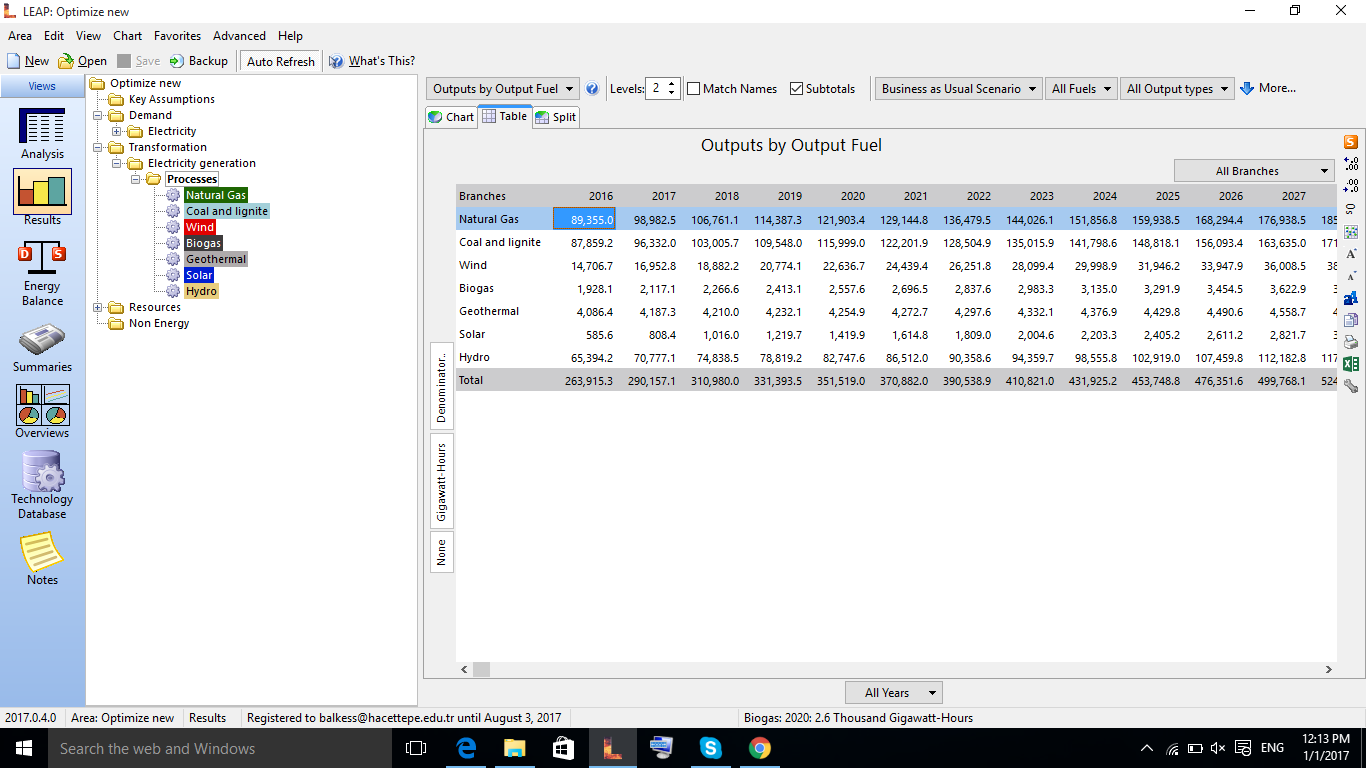Topic: Optimization Subscribe | Previous | Next
If I dont have the load shape curve how can I solve this problem to use the optimization in LEAP
Balkess,
Thank you very much for answering. I wanted to ask if can I use the time slice yearly for one value as 100%??? and also I wanted to know is it enough to have hourly data for one year before the base year to make the shape load curve????
I wanted to ask also how the leap Calculating the energy dispatching as KWh because the energy production is calculated from the maximum availability and the installed capacity. I calculated them using the program and Excel they are different. Did Leap take into account another factor ???
1 Like Hi - that's quite a few separate questions. In future, please organize your questions by topic into separate forum threads.
- Yes, you may use a single time slice (containing 100% of all 8760 hours), hourly time slices (8760 separate time slices, one for each hour), and any configuration in between. To set up time slices, select General: Time Slices. I suggest reviewing this help file as well: http://www.energycommunity.org/WebHelpPro/Supporting_Screens/Time_Slices.htm
- If you have even a single year of hourly load data, this is still useful for determining a load shape. As with any model built with sparse data, you should be aware of any problems introduced by using one data point instead of a longer historical time-series containing many years of data.
- I'm not sure what you mean by "Does LEAP do the optimization according to the emission factor". However, you may specify both an annual emissions constraint and externality values if you wish, by adding pollutants underneath the "Effects" category (immediately below "Key Assumptions" and above "Demand"). Please review these help files: http://www.energycommunity.org/WebHelpPro/Effects/Externality_Costs.htm, http://www.energycommunity.org/WebHelpPro/Transformation/Emission_Constraint.htm
- Please review this help file for assistance viewing environmental results: http://www.energycommunity.org/WebHelpPro/Results_Categories/Environmental_Results.htm
- Electricity production is not simply the product of capacity (MW) and the number of available hours in a year (<8760 hours). The Maximum Availability variable provides an upper constraint on the amount of process capacity which can be dispatched each time slice, but the actual electricity production may be less. There are a very large number of reasons that you may calculate different results using Excel. Can you be more specific about your question? For example, are you, or are you not using optimization for your Electricity Generation module?
1 Like Balkess,
I am sorry, I used the detailed hourly data for the base year and it is still different than the actual production from Leap How can I solve this Problem ???
I am so sorry. I am trying to solve it but it seems impossible.
Hi Balkess,
- If you see an error, what were the exact steps that you took in order to generate the error?
- Does the error happen every time you perform these steps?
- If you are asking a question about unexpected results, please clearly show what result you found in LEAP, and what result you expected to get, and explain why you expected to find a different result.
- Include answers to any clarifying questions that we ask you in our replies.
- Before posting, can your question be answered by reviewing either our Online Training Materials (https://www.energycommunity.org/default.asp?action=trainingmaterials) or our Help Pages (http://www.energycommunity.org/WebHelpPro)?
Thanks you very much for your explanations. Actually I felt confused a little bit. A bout the error it always presents when I change the system energy load shape. For example when I am doing it daily or hourly, it is not responding and giving me this massage!
Hi,
Thank you for answering.
• I am using my data which hourly data, for example I want to enter the data hourly or daily no seasonally and not monthly. By doing that in the LEAP in the Yearly shape section, it is not responding and stop. why I do not know??
• Another question, I have a business as usual scenario which is assuming that there are no changes for the sharing percentage from the different technologies. When I use the dispatch rule as full capacity it is giving me the results that I want from the production. But when I am using MeritOrderDispatch not giving me what I want.
• I want to know why??? does the merit using the yearly shape and the full capacity not?
I hope that you will understand me.
Thanks in advance.
Balkess





.jpg)
.jpg)